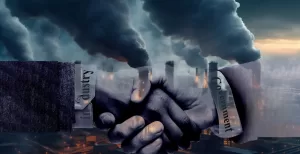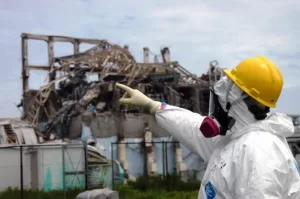Nityanand Jayaraman
Two days before India went into a lockdown in March, the Ministry of Environment, Forests and Climate Change published a draft Environmental Impact Assessment (EIA) Notification, 2020, for public comments. The bar on public gatherings due to the lockdown, however, did little to dampen the spirited opposition to the draft. Youth, celebrities and political parties unleashed a fusillade of memes, videos and hashtags calling out the proposed law for rewarding environmental offenders, putting short-term profits of big business over the interests of future generations, and limiting public participation in environmental decision-making.
The allegations against the draft EIA 2020 are true, and its nationwide condemnation is justified. However, the 2020 draft is merely the latest — and worst — in a series of laws that view democracy and environmental protection as impediments to the ease of doing business. Scrapping this draft is essential, but not sufficient to cure India’s malaise. Indian environmental governance is characterised by a dangerously relaxed attitude to scientific rigour and integrity, and a disdain for public participation.
Successive EIA notifications — first in 1994, then in 2006 — barred certain industrial and development activities from commencing without an EIA, public hearing and prior environment clearance. However, under pressure from big businesses, the object of the law has been continuously weakened. Since 1994, the law has been amended 65 times, including to exempt potentially damaging activities from the purview of the rules and providing a route for legalising activities commenced without environment clearance. Despite a Supreme Court order ruling such post-facto clearances to be illegal, the draft EIA 2020 perpetuates the practice of rewarding the offender.
Science And Nonsense
The EIA notification is a product of the 1992 Rio Declaration on Environment and Development which enjoined member states to undertake EIAs for proposed activities that are likely to have an adverse impact on the environment.
Documents such as the EIAs and feasibility reports are meant to be truthful and scientific. In India, though, the poor quality of such studies is legendary, prompting even former environment minister Jairam Ramesh to admit that “between the manipulated EIA report and the fixed public hearing, the environment clearance has become a fait accompli.”
Even “reputed” consultants submit reports with plagiarised and fraudulent data. In 2000, Ernst and Young presented a 65-page EIA for the Dandeli mini hydel project in Karnataka of which 60 pages was plagiarised content from the EIA for another dam project 90 km away.
A 2018 Feasibility Report prepared by Feedback Infra for a controversial eight-lane expressway connecting Salem and Chennai in Tamil Nadu justified the project saying it would benefit the women of Xian, a city in China.
Such crippling flaws are brought to light, not by the ‘experts’ appraising these projects, but by ordinary citizens and community activists.
In the case of a 4000-MW coal power project proposed at Cheyyur in Tamil Nadu, ‘experts’ in the appraisal committee cleared the project over-looking the numerous falsehoods contained the application and the EIA. The project documents denied the existence of ecologically sensitive areas, including estuaries and areas used by migratory species. However, the project site is sandwiched between two estuaries with mangroves and seagrass beds, and located partly inside the Cheyyur Lagoon, a hotspot for birds, including trans-Himalayan migrants such as the Bar-headed Goose and ‘near threatened’ species such as the Lesser Flamingo and European Curlew.
Fortunately, the project has not progressed, but that is because of public pressure. Left to the experts, the project would have been completed, the environment damaged and farming and fisher livelihoods harmed.
Decisions based on such reports can trigger irreversible consequences on communities and ecosystems. Unfortunately, there is no mechanism by which citizens can hold the authors of these reports or the easy-going ‘experts’ accountable.
This culture of impunity extends also to project promoters that engage in unlicensed construction or operation. The bigger the project and more prominent the project proponent, the less likely it is that the spirit of the law will be enforced.
Oil India’s well blowouts in Baghjan, Assam, have exposed the hydrocarbon sector’s dirty footprint. However, aided by pliant regulators at the pollution control boards (PCB), this sector has systematically avoided environmental due diligence and externalised risk to local communities and the environment around India.
In Tamil Nadu’s Cauvery delta, the ONGC claims to have drilled more than 700 hydrocarbon wells; of this, the ONGC says 183 were in operation in 2018. The PCB had records of only 71 operational wells, none of which had a valid operating license.
The ONGC has faced no legal action for its unlicensed operations. Neither has any officer of the PCB for dereliction of duty. Ditto with the more recent case of Vizag-based LG Polymers, where a gas leak on May 7 killed 12 people and injured thousands. LG Polymers did not have a valid environment clearance, and its application for post-facto clearance was pending with the ministry. Despite the magnitude of the offence, the ministry decided against closing the plant down. The offender’s impunity arises from the lack of accountability of the law enforcer.
India’s environmental future is bleak. India is unlikely to survive the 21st century climate nightmare unless the government realises that the health of the environment matters more than the health of private businesses. Any strong environmental governance system is incomplete without tools that allow citizens to hold decision-makers, law enforcers and expert appraisers accountable.
(Nityanand Jayaraman is a Chennai-based writer and social activist. Article courtesy: Moneycontrol.com.)




